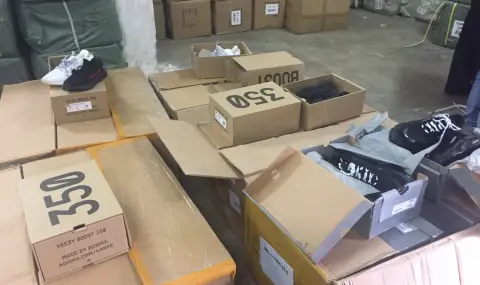Consumers most often buy fake goods as a result to the action of unfair commercial practices, fictitious discounts and fraud in social networks. These risks are heightened in the last two months of the year, which come in anticipation of the traditional Black Friday, Christmas and New Year's campaigns. The comment is from Gabriela Rumenova, founder of the online platform “We, the users“.
In front of BNR, she disclosed data from global studies, according to which nearly 70% of people cannot distinguish originals from replicas. And what is even more alarming is that about 60% of respondents admit that they would quite knowingly buy a fake product if it were cheaper. According to official data, the most frequently sold counterfeit products are clothes and accessories, shoes, electronic devices, hygiene and cosmetic products.
How can counterfeit goods be recognized?
First of all, on the data about the merchant and user reviews about him. Next is the product itself. Counterfeits most often resemble in appearance and come very close to the names of the original brands, but there is an added letter or other almost imperceptible sign. These small differences should tip us off to the scam. Price is another guide, but one should be kept in mind. Merchants are inventive and often use tricks, such as announcing discount campaigns, supposedly on the occasion of sales, anniversaries, various holidays, etc. Then they indicate close to the real price of the original product and shoehorn huge discounts of the order of 80 or 90%. This is very doubtful, because rarely would a major global brand reduce its prices so much.
Risks intensify in November and December
In the last months of the year, which are reserved for big discounts, the risks of online fraud are the greatest. That's when fake pages on social networks are massively created and sales sites are launched, which aim to sell low-quality and fake goods or scams related to the theft of personal data and draining bank accounts.
How to recognize fake pages in social networks?
These pages have a very low number of followers, posts and user comments. Comments from users who exposed the scam are often missing because they have been deleted by moderators. Their photos are stolen from the official sources, taken from banks or extremely low quality.
How to recognize fake sales sites?
These sites are usually newly created, with a very poor interface and poor spelling in terms of language and style. The photos are again most often taken from official electronic stores, downloaded from banks or of suspiciously low quality.
Why should we not buy counterfeit goods?
Imitations are usually of lower quality, and some of them can be dangerous. In electrical appliances, for example, incorrectly calculated circuits can cause short circuits and fires. Deals with counterfeit goods cause image and economic damage to the original brands, the goods themselves.
Signals to “We, the users“ for online counterfeit goods scams
The lady bought underwear from Facebook, which was allegedly from a global brand. It failed because the fraudster used original photos of the models taken from the brand's official website. The price was presented “on the occasion of the company's 136th anniversary” at a huge discount – 80-90% which is done from regular price very close to original products.
In another case, a gentleman bought perfume for his wife with the idea of surprising her, but it turned out to be fake. It was even in a cut that is not offered by the original manufacturer.
What are our rights when buying counterfeit products?
If we come across fake products, we should try to return them to the merchant and under no circumstances use them, because they may turn out to be dangerous. It is our civic duty to warn as many users as possible and to notify the control authorities.
There is also a risk of phishing attacks
During periods of more intense online purchases, such as the end of the year, internet fraudsters become more active. Mass campaigns for phishing attacks are organized, which are usually implemented by sending messages about supposedly waiting packages to courier services. However, the goal is to be “caught” victims to follow an active link and their personal data collected.
